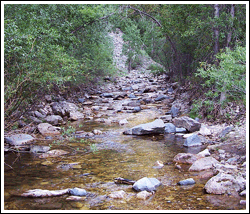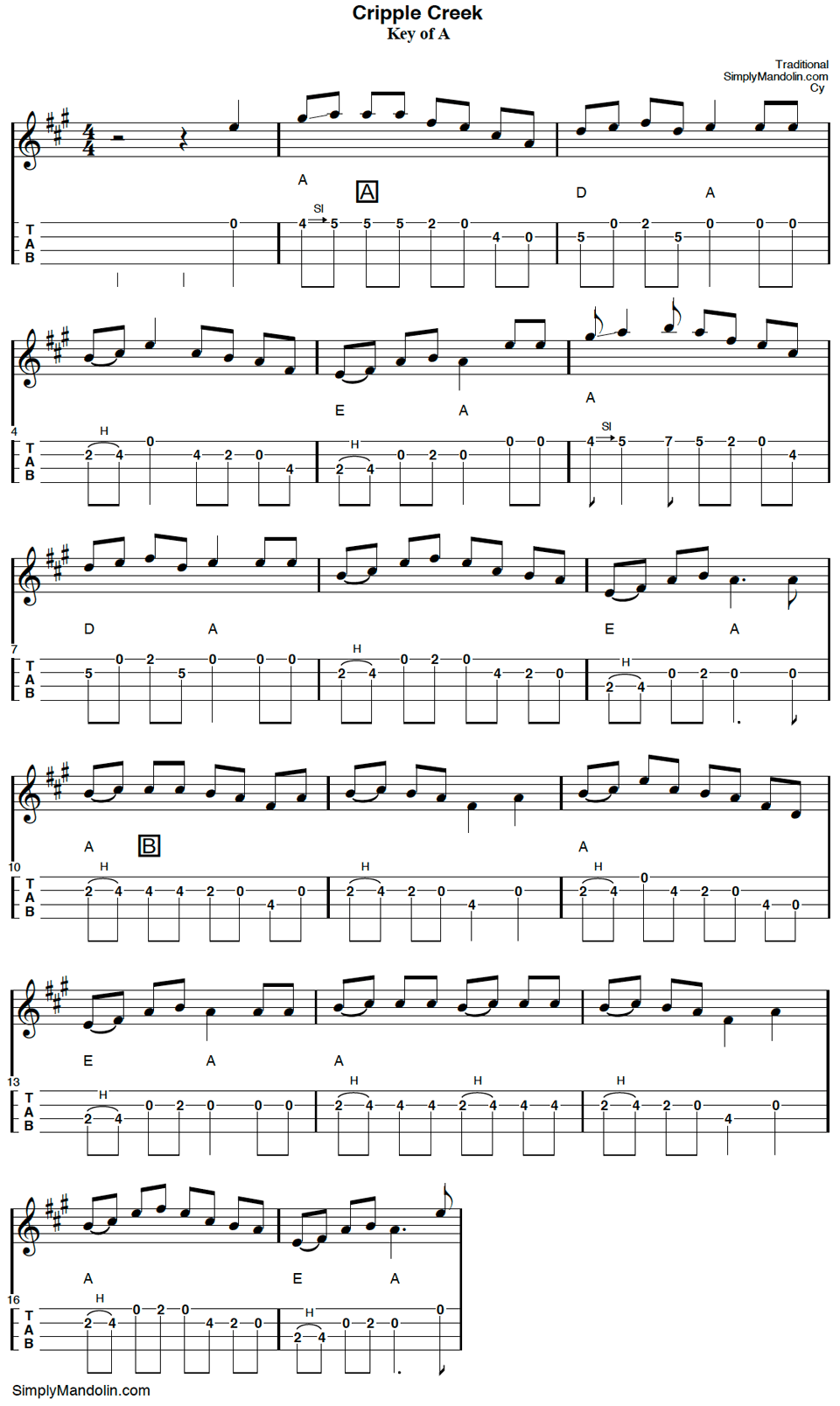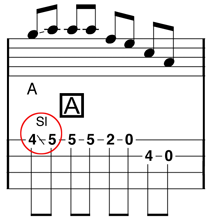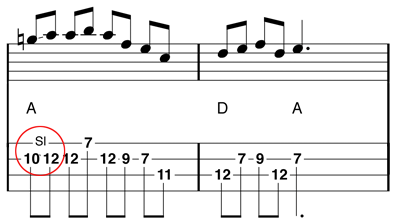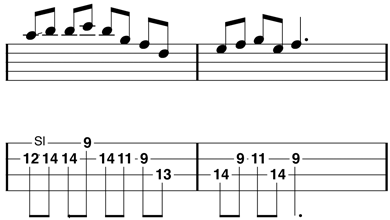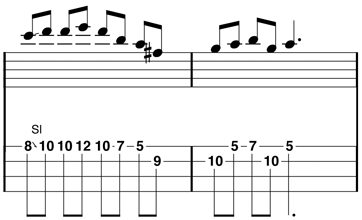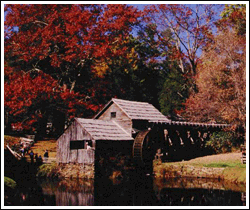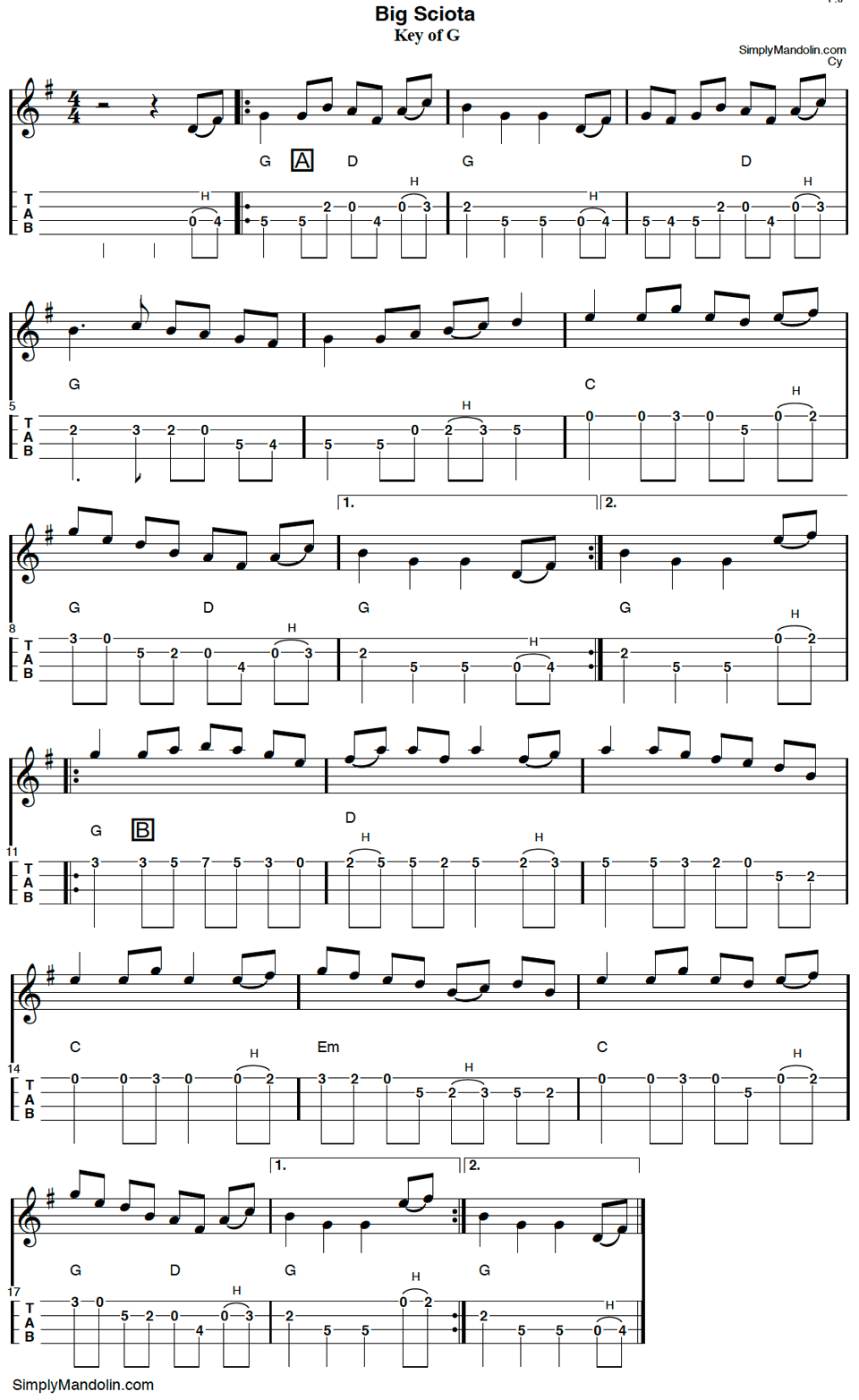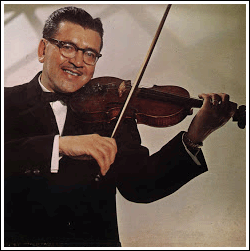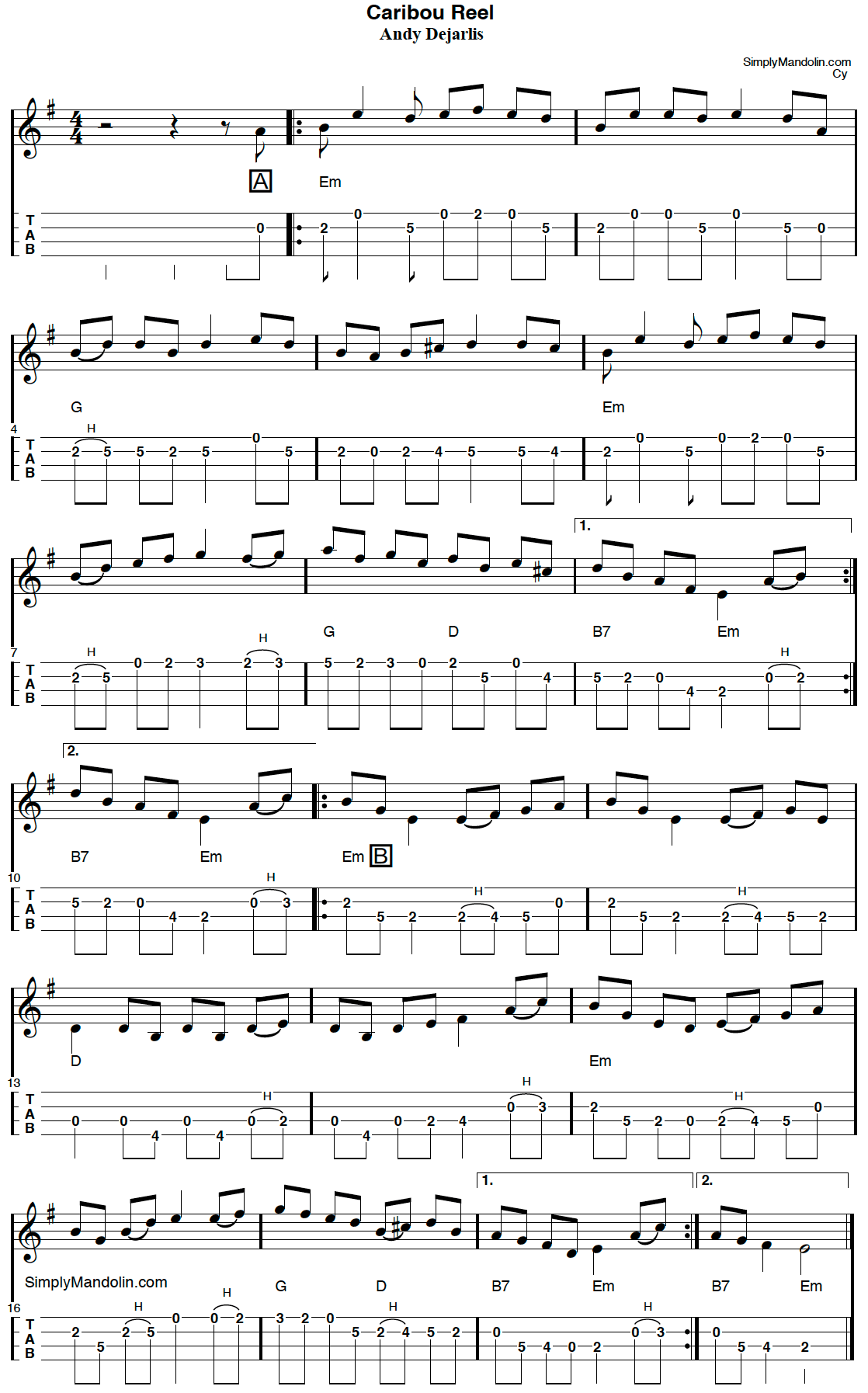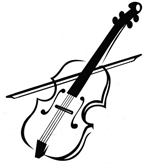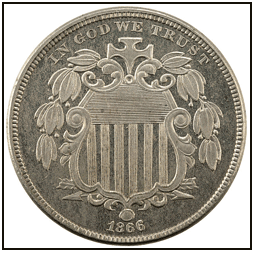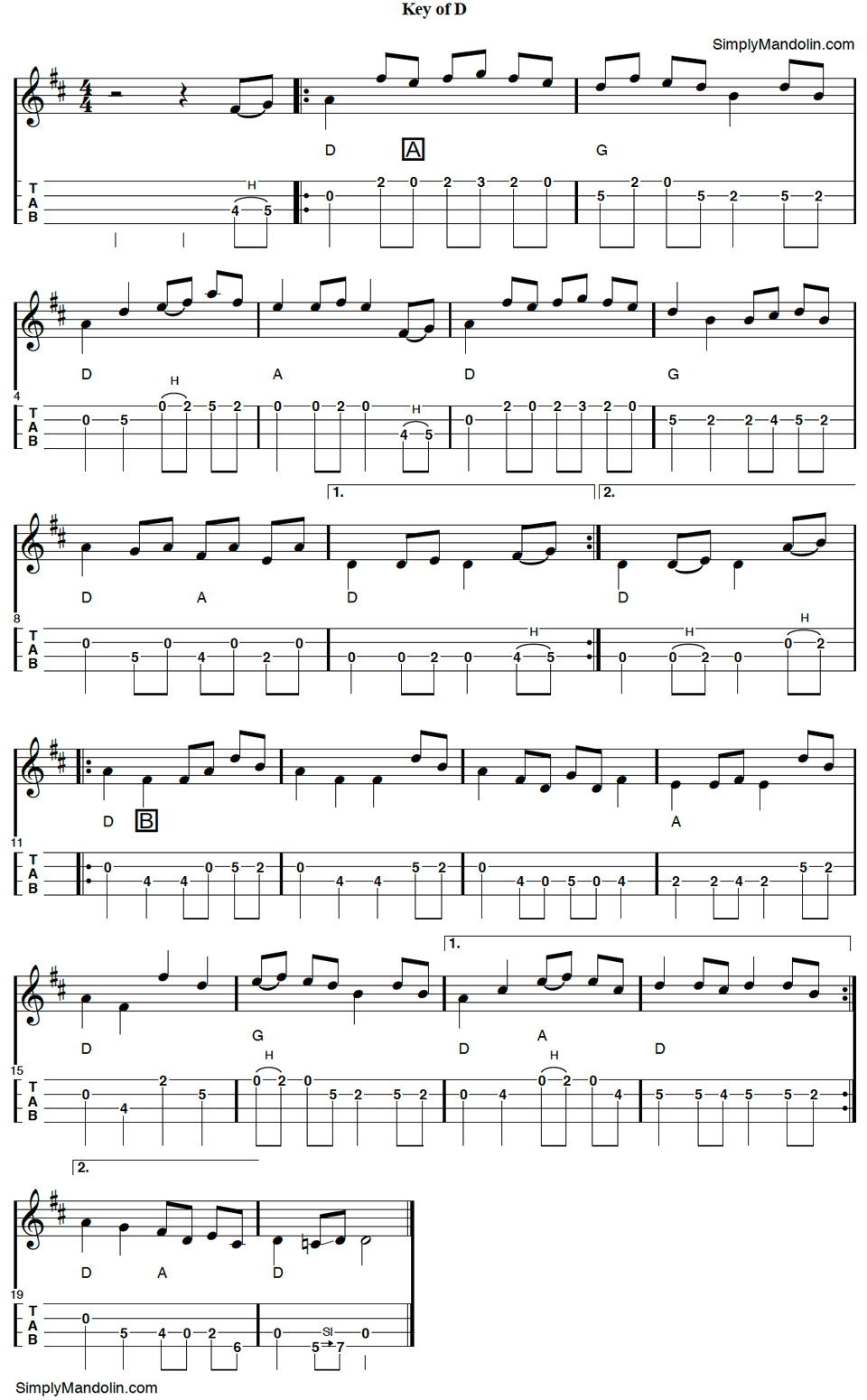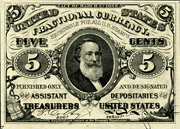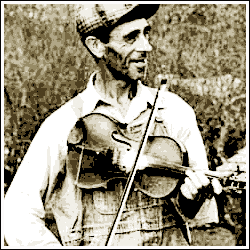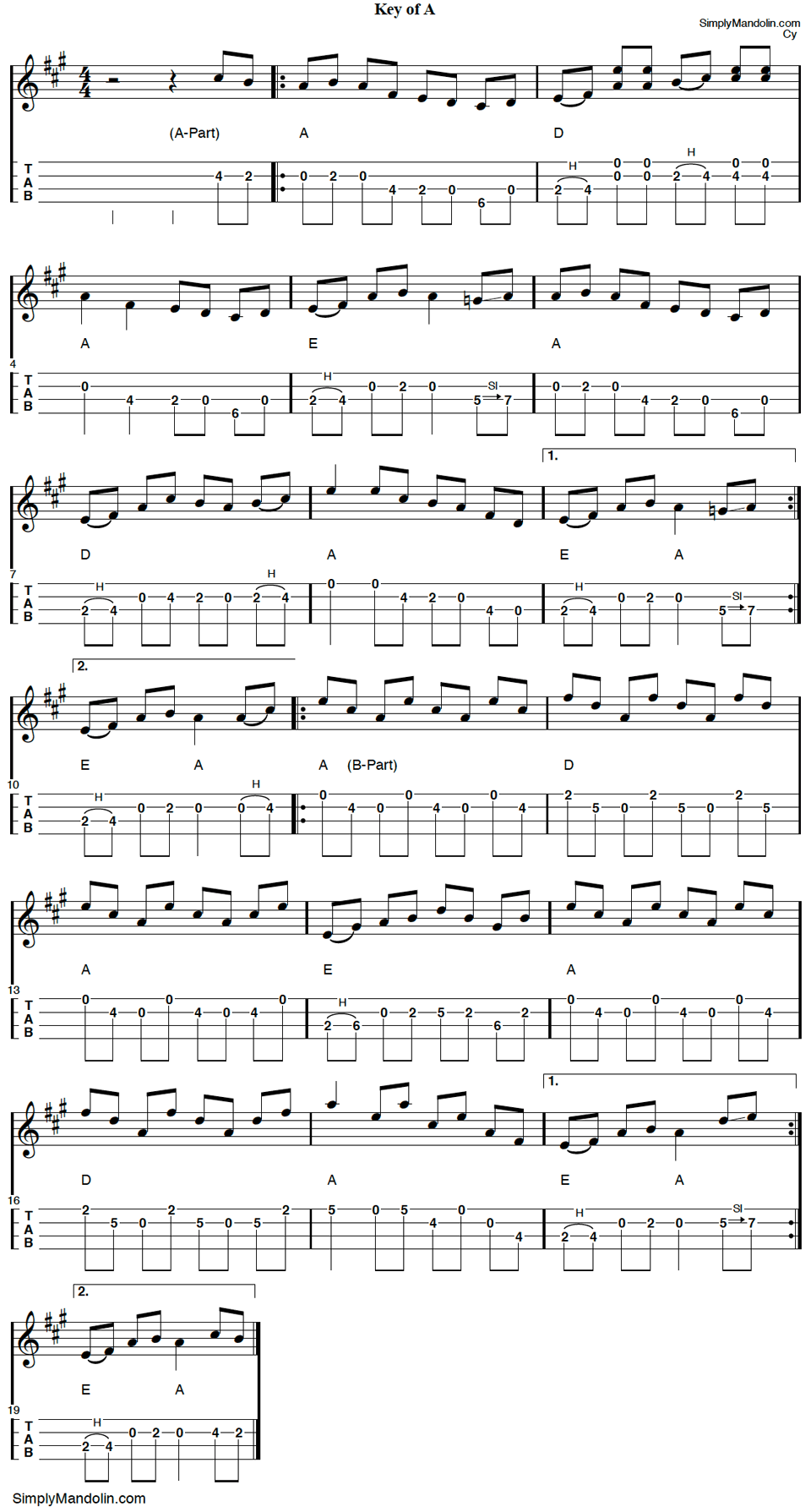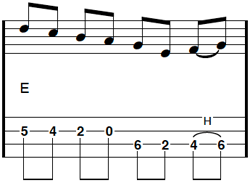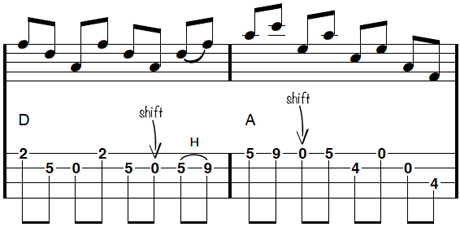
Watercolor by Jani Freimann
Bill Cheatham is another popular old-time fiddle tune. Many well-known musicians have recorded this simple little melody, and it has always been a common and ‘often learned’ bluegrass session tune.
Finding information on its origin was pretty much futile, at least in the time I spent scouring the internet. I was able to find a couple of old recordings from the late 1800’s, but no composer – and not a bit of info on who Bill Cheatham might have been.
But, the tune has survived, and remained popular for over a hundred years, like thousands of other traditional old melodies. It isn’t a difficult tune to play, and well worth the effort to learn.
The Tune
Bill Cheatham is most often played in the Key of A. The ‘A-part’ is usually played twice followed by the ‘B-part’ (also twice).
I’ve written a basic version below that everyone should be able to work with. Following that, I’ve shown a couple of simple little two-bar variations. Nothing complicated, I’ve just added a couple of notes to demonstrate how we can keep our right hand moving. After learning the arrangement as shown below, try playing the changes. Practice it until you can just pop them in and out whenever you want.
Both versions are in the downloads.
Listen to “Bill Cheatham” for mandolin (version 1)
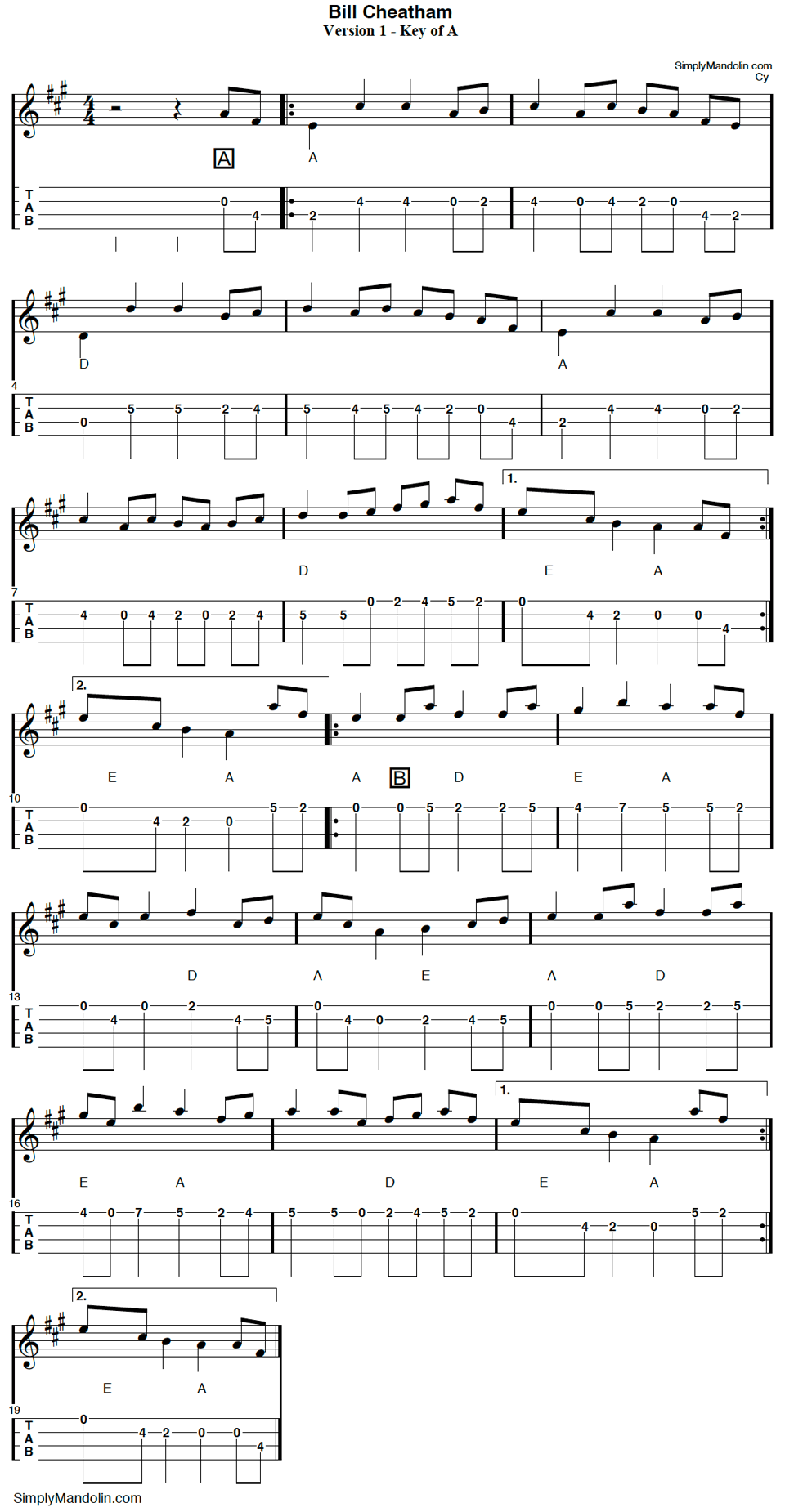
Downloads:
Just a note or two…
Just adding a couple notes here and there can help keep your right hand moving. What notes can you add? To start with, look at the key your tune is in (this tune is in the key of A), and try notes from that scale.
Sometimes, just adding a note or two can make a big difference to the flow of your tune, as well as the finger movement of your left hand.
As an example, in the A-part, take a look at the 6th and 7th measures.
Instead of this:
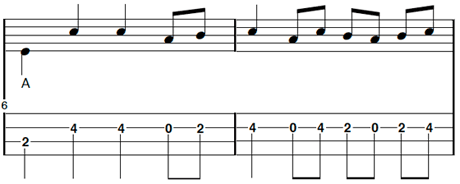
Try the following:
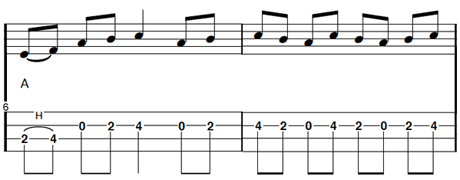
We could also make some simple changes to the 12th and 13th measures in the B-part.
Instead of this:
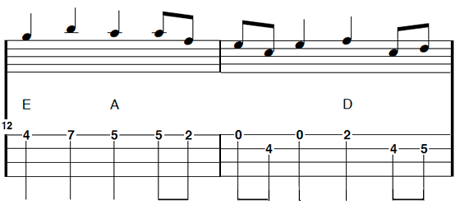
Try this:
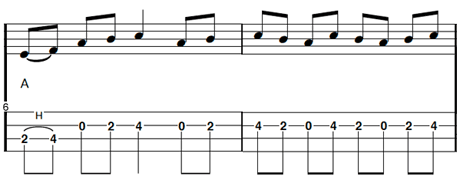
Listen to “Bill Cheatham” for mandolin after these easy changes:
Take a look around and see where else you might be able to add a note or two. Of course, if you wanted, you could add enough to produce a constant barrage of 8th notes throughout the whole arrangement. That would be a great exercise to help learn how to change the flow, or how to keep your right hand moving. As a result however, your tune could end up sounding a little less musical and more like a typewriter.
Its not a matter of trying to make it more difficult to play, but to improve the flow or make it more musical. So, add to and take away until it sounds good to your ear.
Drones
Another thing to think about with this tune is drone notes. In the key of ‘A’, two of the major tones are ‘A’ and ‘E’. As a result, the open first and second strings can often be struck as drones. It’s up to you to decide where they sound best.
Experiment a little and see what you can come up with.
Thanks for taking a look at Bill Cheatham. I hope you enjoy the tune.
Don’t Miss a Beat!
Join our mailing list for new tabs, practice ideas and study material.
Keep informed of new projects. Its free!
No spam, ever. That’s a promise!


